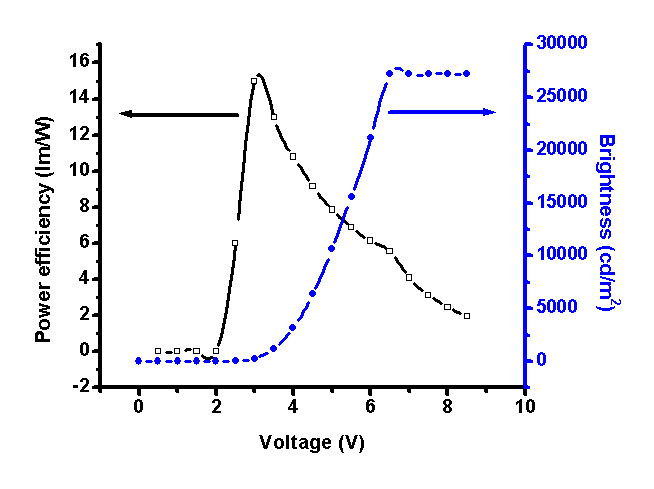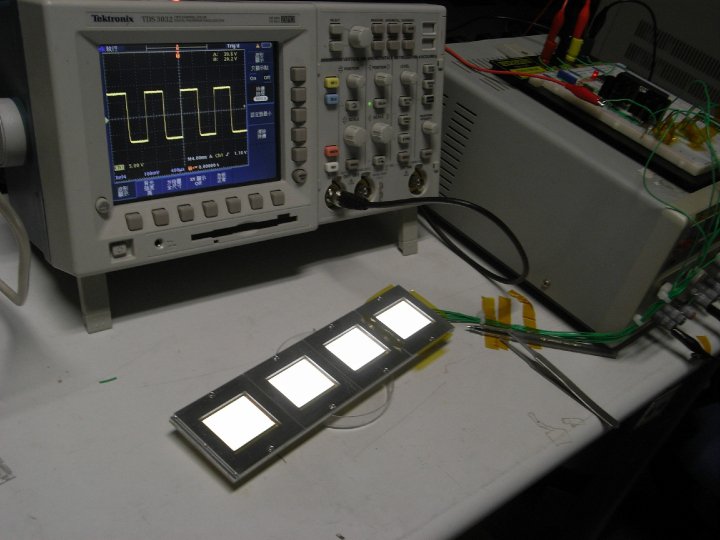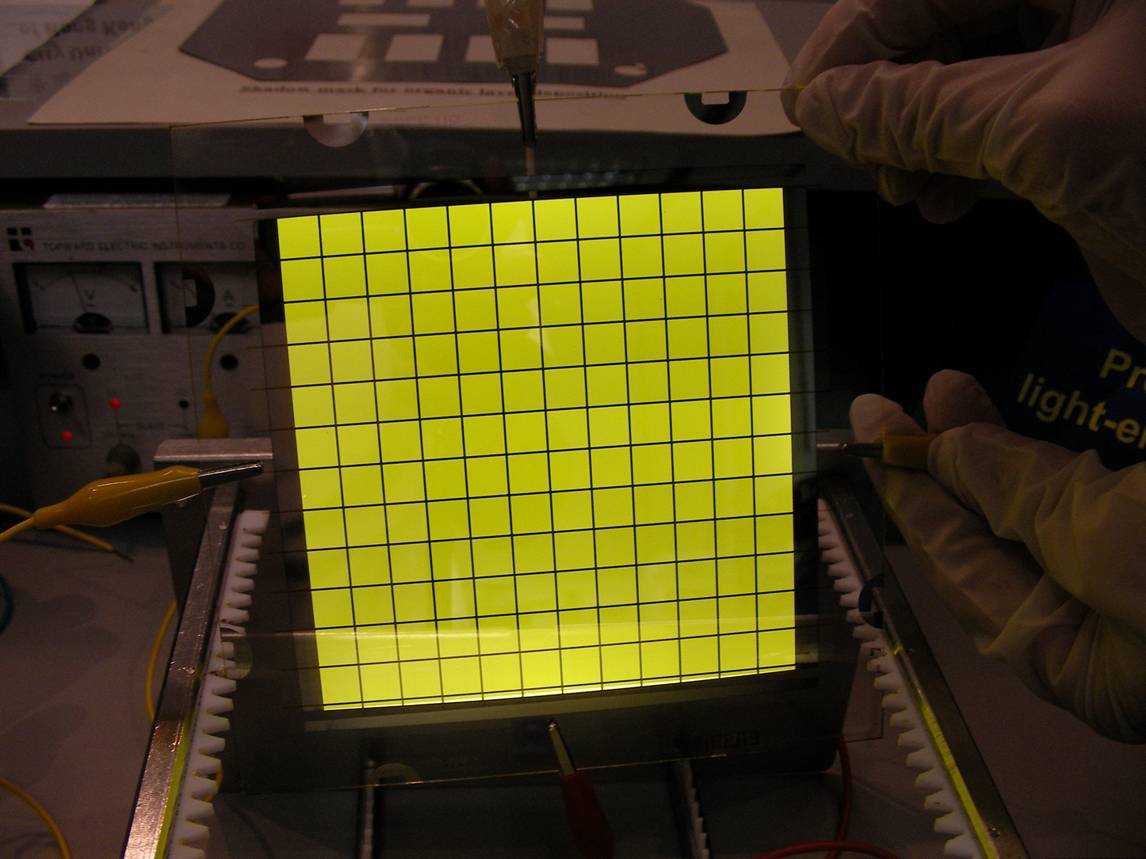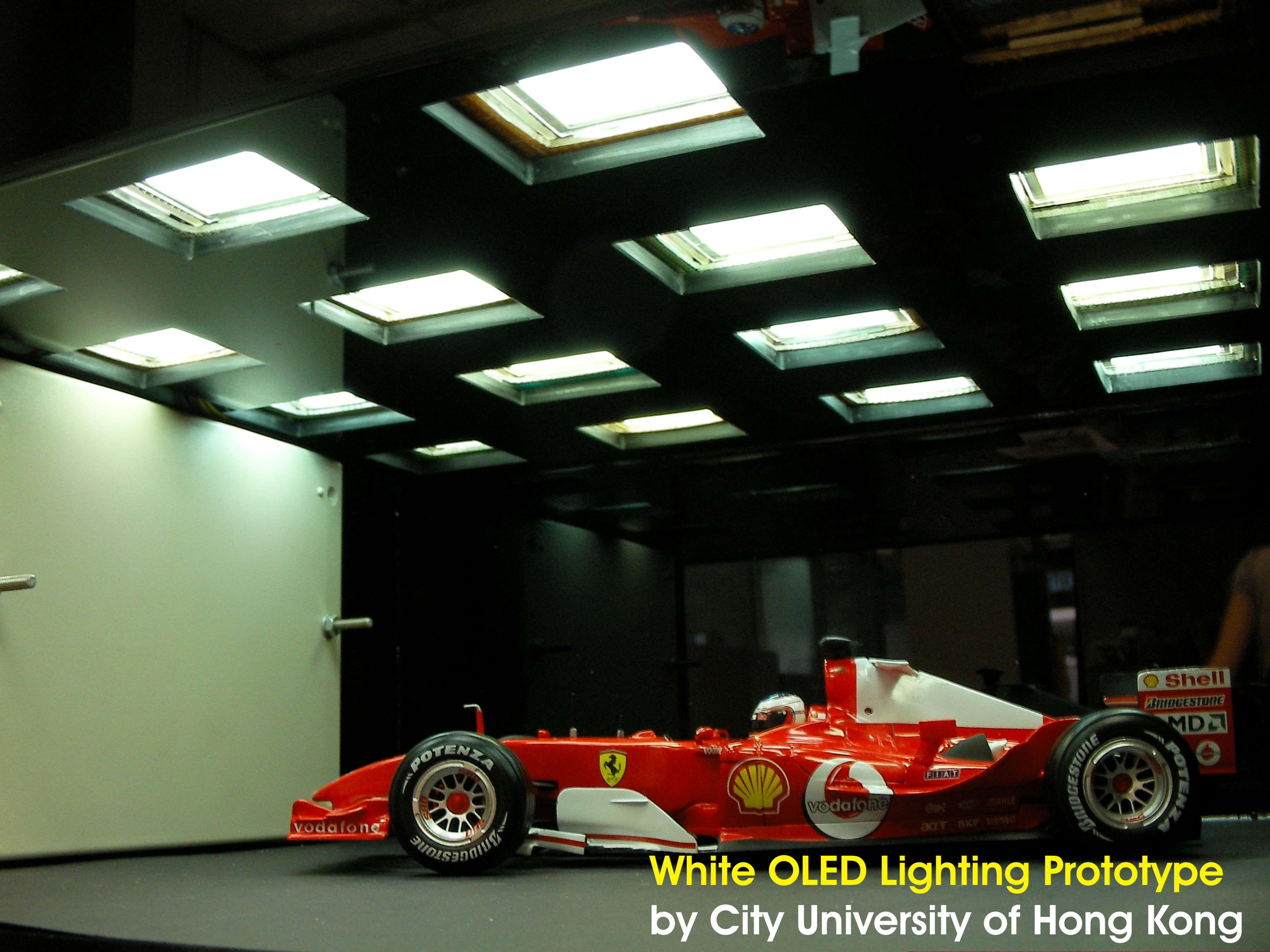Organic Light Emitting Diode
Nanotechnology-Enabled Organic Light Emitting Devices for Decorative and Special-effect Lighting Purposes
Funding Supported by:

Significant Achievements (Feb 2009 - March 2010):
White-Emitting OLED
- Making use of phosphorescent-fluorescence hybrid approach [fluorescent blue + phosphorescent red + phosphorescent green], we fabricated a white OLED with a power efficiency of 27 lm/W. The CIE coordinates are (0.34, 0.39).
- By making use of our in-house phosphorescent yellow dopant, we succeeded to fabricate a white OLED with current efficiency and power efficiency of 37 cd/A and 50 lm/W, respectively. The CIE coordinates are (0.32, 0.45).
- Making use fluorescent RYB apparoach, we fabricated a white OLED with a power efficiency of 15 lm/W. The CIE coordinates are (0.45, 0.41).
- 2" and 6" prototypes :
Colorful OLEDs
- Fabrication of red OLEDs with a luminance greater than 6000 cd/m2, and green, blue and yellow OLEDs with luminance greater than 10000cd/m2.
New Materials
- Synthesis of a new blue phosphorescent dye F3IrPic. The device fabricated has a current efficiency of 16 cd/A and an C.I.E. of (0.19,0.25). Most important, the cost for the synthesis is merely 20% of that of the commercial blue dopants.
- Synthesis of a new blue host CBPCH. By using FIrPic as a dopant, the device exhibits current efficiency and power efficiency of 13.4 cd/A and 5.8 lm/W respectively, which are greater than a device (11 cd/A and 2.4 lm/W) using CBP as a blue host.
- Synthesis of a new blue host DCNF. By using FIrPic as a dopant, the device exhibits current efficiency and power efficiency of 29 cd/A and 29 lm/W respectively, which are greater than a device (11 cd/A and 4 lm/W) using mCP as a blue host.





